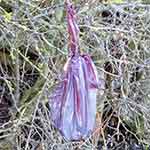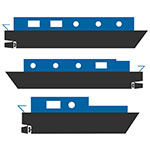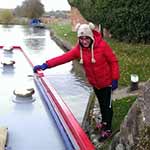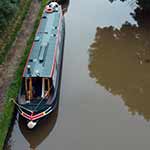Quite Interesting Facts About Canals
A few facts about canals and navigable river network in the UK
The history of our canals go back to the Roman times.
And you might ask...
What have the Romans ever done for us?
Well, they built our first canals mainly for inland navigation. Foss Dyke was one of the first and built around 120 AD. It connected the River Trent at Torksey to Lincoln.
It got some much needed refurbishment by King Henry 1st and later by King James 1st.
Work has continued over the centuries right up to 2011 when the new section to Saxilby was opened on 26th July.
The canal system continued to grow and expand also to outrun the pack-horse trains that had been the main method of transporting good around the country. The industrial revolution was an impetus to the increased pace at which canals were being built.
Before locks were implemented into the British canal system, the canals were exclusively 'Contour Canals'. These followed the easiest route or 'contour of the land'. This means that a canal will travel around elevated ground or valleys. Often this would be near to a natural river course. However, this method usually meant a much longer canal than a direct route.
The first canal to be purpose-built for transporting goods was the Bridgewater canal.
The building of contour canals began to be phased out around 1800. One of the last of these was the Oxford Canal which is almost 80 miles in length. The Oxford Canal begins near to Hawkesbury Village in Warwickshire. The northern end of Oxford Canal is at Hawkesbury Junction on the Coventry Canal and traverses via Banbury and Rugby.
Roughly halfway, at Braunston Junction, you can take the Grand Union Canal to London.
The bottom half of the Oxford Canal is largely a Contour Canal. There has been some straightening out with the addition of locks 8 to 46.
The upper reach with only 7 locks provides an almost lock-free.
The canal took about 21 years to build in various sections. It is one of the main canals connection the southern network to the northern network.
Running from London to Birmingham is the Grand Union Canal. 137 miles and 166 locks plus some twelve tunnels and aqueducts.
Technology improved in the building and facilitating of the canals.
The invention of canal locks straightened them out allowing for a more direct route. Of course, aqueducts enabled the crossing of valleys and we have some pretty impressive aqueducts around the canal network.
There are several types of lock, which I will write about soon. Almost all locks in use today, on the British Canal and Navigable River Network are Pound Locks which were used by the Chinese way back about 984AD. Although pound locks have come on a long way since then, the principle remains the same. Gates were lifted and lowered to control the flow of water and thereby to raise or lower water levels. Vertical rising sluice gates significantly improved the pound locks into what we see in use today. A great deal of credit must be paid to Leonardo Da Vinci for the invention of the Mitre Lock. This is where the 'Lock Gates' are mitred at an angle of 45 degrees. The result is a tighter seal as the water rises against the mitre.
The demise of commercial canals came about by the introduction of trains and better roads. There has always been a small continuance of commercial canal haulage but much smaller than the 18th and 19th centuries.
Different Types of Canal Boat
The main types are: Traditional, Semi-Traditional (Semi Trad), Cruiser, Wide Beam and Tugs,
Narrowboat Holidays as a Child
As a child my parents would take myself, my brother's and my sister on canal holidays.




